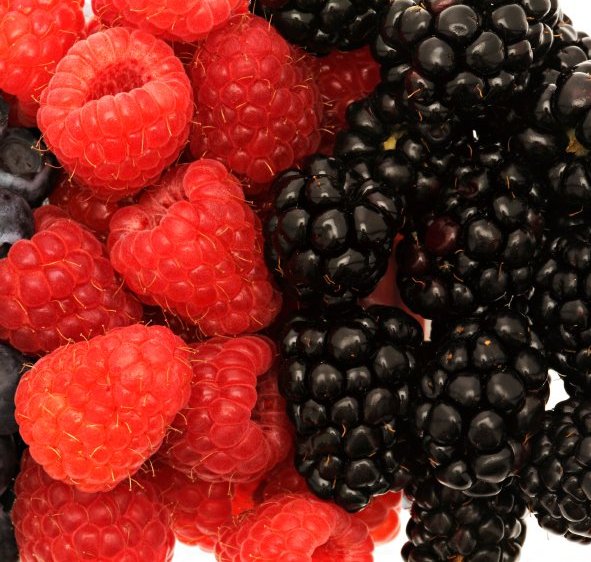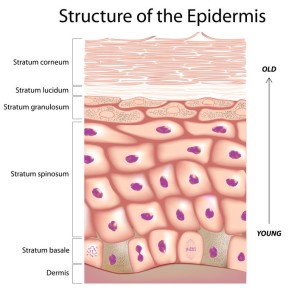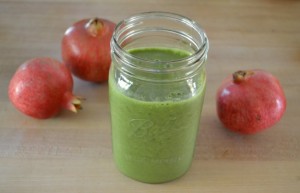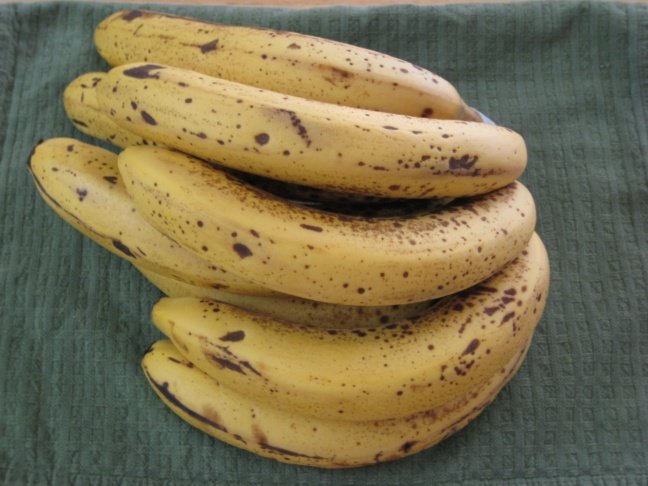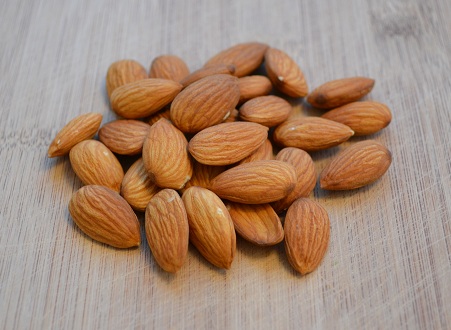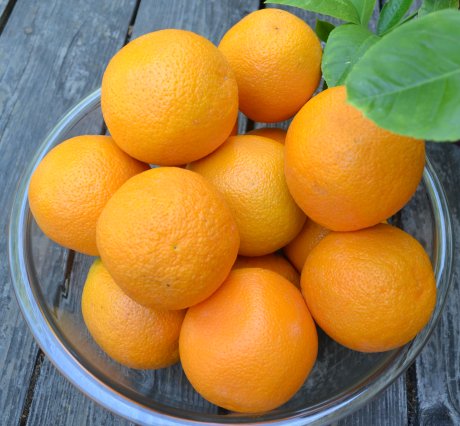Spring is in the air and gardening season has begun in our home! Some of the many joys a raw food enthusiast experiences in Springtime are: preparing soil in raised beds to grow favorite garden vegetables, choosing the perfect vegetable starts, then planting them and watching them grow throughout the season. Harvest time is always exciting, too, as we reap the “fruits of our labor” (and the vegetables, too!).
Plant leafy greens for optimal nutrition
This year, in order to pack our raw vegan diet with optimal nutrition, we’ve planted a plenitude of leafy greens, including several types of lettuce, frisée (curly endive), dandelion greens, arugula, two types of kale, and two types of collard greens. The lettuce varieties we planted are heirloom varieties of green leaf, red leaf, red Romaine, green Romaine, and red oak leaf. Lettuce, frisée, and dandelion greens are all members of the sunflower family (Asteraceae), while arugula, kale, and collard greens are members of the cabbage family (Brassicaceae). Members of this plant family are also known as cruciferous vegetables, and include broccoli, cauliflower, maca, turnip, rutabaga, Brussels sprouts, watercress, red and green cabbage, bok choy, and Napa cabbage.
We’ve also planted several varieties of tomatoes, including some of the heirloom varieties we love, like Pineapple tomatoes, Cherokee Purple, Green Zebra, Brandywine, and several different types of cherry tomatoes. Several tomato varieties love heat, and we planted those in our yard on the south side of the house, which is warmer than the rest of our yard and more sheltered from the wind. Tomatoes are part of the nightshade family (Solanaceae) along with bell peppers, eggplant, potatoes, tomatillos, goji berries, Incan berries, jalapeño peppers, and other hot pepper varieties.
Plant mints in containers for best results
We have quite a few plants from the mint family in our yard this year, including several types of basil and four types of mint. Mints have a tendency to grow and spread prolifically. Early in my gardening career I made the mistake of planting mint in my raised beds and found out the hard way that mint plants have a tendency to “take over” the garden. This year, I learned from past experience and planted the mints in half wine barrels to keep them appropriately contained. However, if you want a very aromatic ground cover, Corsican Mint is a beautiful choice. A couple of years ago, I planted it in a makeshift herb garden in a non-grassy area of my yard. It has since spread and creates a deliciously fragrant chocolate mint addition to the area. It may surprise you to know that Chia seeds are another member of the mint family famously popular in the raw food community!
On the other hand, most types of basil stay localized in their growth habit, so I plant basil directly in my raised beds. They make a lovely companion planting next to the tomatoes, and the two are a perfect culinary combination, especially in Italian cuisine.
Fruit-bearing plants in our yard include two types of lemon trees and a fig tree, which is already producing numerous small figs. The fig tree is only five years old, and has already been producing numerous baskets of figs for the last three seasons. Since we adore figs, we’re really looking forward to harvest time later this year!
Plant fruits and vegetables no matter where you live
This is a small sampling of the foods we are currently growing in our yard and garden. We enjoy being able to create more diversity in our raw food diets and growing foods we enjoy that can be harder to find in the grocery store aisles. Even more importantly, we notice a big difference in the taste and quality of the foods we grow compared to the ones we buy. We suggest growing fruits and vegetables—you’ll be well rewarded in both taste and nutritional value. Before we had a back yard, we grew vegetables and fruits on our apartment patio, and sprouts, greens, and grasses near a window in our dining room. There are so many ways to grow your own food, and at harvest time, you’ll be grateful that you made the worthwhile effort. Happy gardening!
One of the best ways to keep in touch with us is to join our email list. You’ll receive a free copy of Our Top 12 Strategies for Long Term Success on A Raw Plant-Based Diet eBook along with regular information about raw food and plant-based diets and periodic promotions for our classes, events, and other offerings!
Raw Food and Prebiotics for Health
There has been a lot of talk about the importance of probiotics for health in the media recently. As a result, there are now numerous products on the market that are supplemented with probiotics. It’s important to understand not only the health benefits of probiotics, but how to keep them alive once they are in the intestinal tract.
Probiotics need food to survive, and once in our intestinal tract, probiotics can stay alive on the foods we ingest. Just like people, probiotics thrive on specific types of foods, especially certain types of fiber. Fiber is not digestible by humans, but is fermentable by probiotics. Fiber that can provide food for probiotics is referred to as a prebiotic. Most types of fiber are composed of glucose molecules hooked together by chemical bonds; but the types of fiber that probiotics prefer as a source of food are composed of fructose molecules hooked together by chemical bonds. These types of fiber include fructooligosaccharides (FOS) and inulin.
Probiotics break down fructooligosaccharides and inulin into fructose and free fatty acids. The resulting fructose is then used as a food source by the probiotics and the free fatty acids serve as a food source for the cells that line our large intestine. In this way, among many others, probiotics help to provide food for us.
Raw Food Plant Based Diet Rich Source of Prebiotics
Inulin and fructooligosaccharides occur naturally in greater than 36,000 plant species in varying amounts. Some of the richest sources of inulin and FOS include banana, dandelion greens, garlic, artichoke, Jerusalem artichoke, onion, leek, yacon, shallot, and many more. There are numerous other commonly consumed raw foods that provide smaller amounts of these types of fiber, including lettuce, snap peas, snow peas, carrots, peaches, blackberries, watermelon, navel oranges, black grapes, raspberries, other fruits and vegetables, and some whole grains. Fruits and vegetables provide plenty of this and many other beneficial types of fiber, which is just one of a myriad of benefits derived by consuming large quantities of fruits and vegetables in one’s daily diet.
There is still much to learn about the health benefits and preferred foods of probiotics, and the media buzz on probiotics continues to grow. There have been articles in major newspapers including the New York Times on the possible connection between probiotics and maintaining a healthy weight, attributed to the ability of probiotics to use calories from our food for their own energy needs. This way, those extra calorie sources are consumed by probiotics rather than being absorbed by the body and stored as fat.
This is just the tip of the iceberg! We include much more information about the importance of probiotics and prebiotics in our Mastering of Raw Food Nutrition. We’d love for you to join us to learn more about this and many other fascinating topics on the science of plant based raw food nutrition.
References and Research:
Bosscher D(1), Breynaert A, Pieters L, Hermans N. Food-based strategies to modulate the composition of the intestinal microbiota and their associated health effects. J Physiol Pharmacol. 2009 Dec;60 Suppl 6:5-11.
de Vrese M(1), Schrezenmeir J. Probiotics, prebiotics, and synbiotics. Adv Biochem Eng Biotechnol. 2008;111:1-66.
Kechagia M(1), Basoulis D(2), Konstantopoulou S(1), Dimitriadi D(1), Gyftopoulou K(1), Skarmoutsou N(1), Fakiri EM(1). Health benefits of probiotics: a review. ISRN Nutr. 2013 Jan 2;2013:481651.
Kelly G. Inulin-type prebiotics--a review: part 1. Altern Med Rev. 2008 Dec;13(4):315-29.
Niness K. Inulin and oligofructose: what are they? J Nutr 1999; 129 (7 Suppl): 1402S – 1406S.
Quigley EM. Prebiotics and probiotics; modifying and mining the microbiota. Pharmacol Res. 2010 Mar;61(3):213-8.
Roberfroid M(1), Gibson GR, Hoyles L, McCartney AL, Rastall R, Rowland I, Wolvers D, Watzl B, Szajewska H, Stahl B, Guarner F, Respondek F, Whelan K, Coxam V, Davicco MJ, Léotoing L, Wittrant Y, Delzenne NM, Cani PD, Neyrinck AM, Meheust A. Prebiotic effects: metabolic and health benefits. Br J Nutr. 2010 Aug;104 Suppl 2:S1-63.
Slavin J. Fiber and prebiotics: mechanisms and health benefits. Nutrients. 2013;5:1417-1435.
Thomas LV(1), Ockhuizen T(2), Suzuki K(3). Exploring the influence of the gut microbiota and probiotics on health: a symposium report. Br J Nutr. 2014 Jul;112 Suppl 1:S1-S18.
One of the best ways to keep in touch with us is to join our email list. You’ll receive a free copy of Our Top 12 Strategies for Long Term Success on A Raw Plant-Based Diet eBook along with regular information about raw food and plant-based diets and periodic promotions for our classes, events, and other offerings!
The Calcium Content of Fruit
One of the best ways to keep in touch with us is to join our email list. You’ll receive a free copy of Our Top 12 Strategies for Long Term Success on A Raw Plant-Based Diet eBook along with regular information about raw food and plant-based diets and periodic promotions for our classes, events, and other offerings!
Is Lettuce a Superfood?
One of the best ways to keep in touch with us is to join our email list. You’ll receive a free copy of Our Top 12 Strategies for Long Term Success on A Raw Plant-Based Diet eBook along with regular information about raw food and plant-based diets and periodic promotions for our classes, events, and other offerings!
Video on the Vitamin E content in Raw and Roasted Almonds
One of the best ways to keep in touch with us is to join our email list. You’ll receive a free copy of Our Top 12 Strategies for Long Term Success on A Raw Plant-Based Diet eBook along with regular information about raw food and plant-based diets and periodic promotions for our classes, events, and other offerings!
Why is fruit easier to digest than other foods?
In this article and video we will explore why fruit can be easier to digest than other foods by understanding several aspects of digestive physiology.
There are three macronutrients that we find in whole foods: carbohydrate, protein, and fat. Fruit is high in carbohydrate and in general, carbohydrates tend to be more quickly digested than protein and fat.
Here is a chart that illustrates the carbohydrate, protein, and fat content (as a percentage of calories) of various types of foods:
| Type of Food | Carbohydrate | Protein | Fat |
| Fruit | 89% | 6% | 5% |
| Vegetables | 73% | 18% | 9% |
| Nuts and Seeds | 16% | 11% | 73% |
| Legumes | 66% | 30% | 4% |
| Grains | 80% | 12% | 8% |
| Oil | 0 | 0 | 100% |
| Avocados | 19% | 5% | 76% |
| Coconuts | 17% | 4% | 79% |
| Spirulina | 26% | 64% | 10% |
As we can see, the macronutrient content of fruit averages 89% carbohydrate, 6% protein, and 5% fat. Fruit is the highest in carbohydrate of the food groups listed.
Types of carbohydrates
There are three different types of carbohydrates: polysaccharides, disaccharides, and monosaccharides. Monosaccharides are composed of a single sugar, as the name would imply. Mono means “one” and saccharide means “sugar”. Disaccharides are two monosaccharides hooked together by a chemical bond. Polysaccharides are composed of multiple monosaccharides hooked together by chemical bonds. For further clarification, there are two types of polysaccharides, digestible and non-digestible. An example of a digestible polysaccharide is starch and a non-digestible example is fiber. Starch is also referred to as “complex carbohydrate”, while fiber is also known as “cellulose”.
Complex carbohydrates, such as starch, and disaccharides have chemical bonds that must be broken down by digestive enzymes into monosaccharides in order to be absorbed. The human body uses the carbohydrate-digesting enzyme amylase to break down complex carbohydrates into simpler carbohydrates. A common disaccharide is sucrose, which is composed of glucose and fructose hooked together by a chemical bond. Since sucrose is a disaccharide, it is broken down by the digestive enzyme sucrase into the monosaccharides glucose and fructose, which can then be absorbed.
To summarize, monosaccharides are absorbed by our digestive tract, so carbohydrates that are more complex must be broken down into monosaccharides in order to be absorbed.
Carbohydrates in fruit
The carbohydrates found in fruit are primarily fructose and glucose, both of which are monosaccharides, so they do not need to be broken down further by digestive enzymes. This is a reason why fruits are often referred to as being “predigested”. In other words, our body absorbs fructose and glucose “as is”, without using digestive enzymes to break them down further.
Here is a chart showing the fructose, glucose, sucrose, and complex carbohydrate content of various fruits:
| Food | Fructose (g) | Glucose (g) | Sucrose (g) | Complex carbohydrate (g) |
| Mango – one whole (207 g) | 6.00 | 1.45 | 20.5 | 0.83 |
| Blueberries – one cup (148 g) | 7.36 | 7.22 | 0.16 | 3.15 |
| Cantaloupe – 3lbs. (1360 g) | 23.69 | 19.47 | 55.10 | 0.17 |
| Apricots – one cup sliced (165 g) | 1.54 | 3.87 | 9.58 | 0.0 |
| Figs – 5 dried | 9.63 | 10.41 | 0.03 | 2.0 |
| Raspberries – 1 cup (123 g) | 2.89 | 2.29 | 0.25 | 1.25 |
| Strawberries – 1 cup sliced (166 g) | 4.04 | 3.30 | 0.78 | 1.31 |
| Apples – one medium (182 g) | 10.72 | 4.42 | 3.76 | 1.86 |
| Watermelon – One cup diced (152 g) | 5.09 | 2.40 | 1.84 | 1.44 |
| Grapes – One cup red (151 g) | 12.28 | 10.87 | 0.23 | 2.60 |
| Pineapple – One cup chunks (165 g) | 3.50 | 2.85 | 9.88 | 3.09 |
| Banana – one medium (118 g) | 5.72 | 5.88 | 2.82 | 6.35 |
The fructose and glucose content of these fruits is notable, especially when compared to the complex carbohydrate content, which is in several cases quite a bit lower. The sucrose content of these fruits varies by type of fruit.
This next chart shows the carbohydrate content of other various other plant foods:
| Food | Fructose (g) | Glucose (g) | Sucrose (g) | Complex carbohydrate (g) |
| Bell pepper – 1 cup chopped red (149 g) | 3.22 | 2.77 | 0 | 2.99 |
| Tomatoes – One cup chopped (180 g) | 2.47 | 2.25 | 0 | 2.34 |
| Carrots – One cup chopped (110 g) | 0.60 | 0.65 | 3.95 | 2.24 |
| Lettuce – 4 cups shredded (188 g) | 1.50 | 0.73 | 0 | 3.96 |
| Yam – One whole (130 g) | 0.91 | 1.25 | 3.28 | 16.28 |
| Lentils – ½ cup (96 g) | 0.26 | 0.0 | 1.40 | 26.45 |
| Brown rice – med grain, ½ cup (95 g) | 0 | 0 | 0 | 74.82 |
The yam, lentils, and brown rice on this table contain much more complex carbohydrate than the fruits we examined in the previous table. These foods are also generally much lower in glucose, fructose, and sucrose than the fruits. This would suggest that yams, lentils, brown rice and other foods high in complex carbohydrates would require more digestive enzyme activity than fruits, which contain simpler carbohydrates. Vegetables, such as carrots and lettuce, are in a less extreme but similar category since they contain fewer simple carbohydrates and generally more complex carbohydrates than most fruits.
In summary, the higher simple carbohydrate content, lower complex carbohydrate content, and lower protein and fat content of fruit versus other foods may account for the reason why the digestion of fruit requires less digestive enzyme activity than other foods. This ease of digestion and simple carbohydrate content constitute at least part of the reason why fruit can provide us with quick energy for our daily activities, and perhaps even our natural detoxification and healing processes. I look forward to a time when more information is available to share with you on this fascinating topic!
Isn’t fruit controversial for some reason?
To make it easy for people to find reliable information on fruit, the glycemic index, glycemic load, fructose, glucose, and carbohydrates in general, we dedicated a chapter in our book, The Raw Food Nutrition Handbook: An Essential Guide to Understanding Raw Food Diets to answering many common carbohydrate questions.
In the book we also cover other hot topics in raw food nutrition such as essential fats, protein, nutrient content of raw food diets, food combining, enzymes, hydration, vitamins, minerals, and many more. We value education on these important topics and are happy to finally bring this book to you. The book is available on Amazon and other online booksellers.
One of the best ways to keep in touch with us is to join our email list. You’ll receive a free copy of Our Top 12 Strategies for Long Term Success on A Raw Plant-Based Diet eBook along with regular information about raw food and plant-based diets and periodic promotions for our classes, events, and other offerings!
Does our body release all types of digestive enzymes at the same time?
This is a great question that is often asked in the context of food combining. Much of the information disseminated about food combining in the raw food community is decades-old, so here I will cover this topic from the perspective of current digestive physiology. Our body makes three main types of digestive enzymes: amylase for carbohydrate digestion, proteases for protein digestion, and lipase for fat digestion.
Depending where we are in the digestive system, our body will release certain types of digestive enzymes. For example, when we are chewing food, our salivary glands release saliva along with two types of digestive enzymes: salivary amylase for carbohydrate digestion and lingual lipase for fat digestion, so carbohydrate and fat digestion begin in the mouth. After food has been chewed, it is swallowed and moves down the esophagus into the stomach. There, the food comes in contact with other digestive factors such as hydrochloric acid and a protein digesting enzyme called pepsin, so protein digestion begins in the stomach.
After food leaves the stomach, it moves into the small intestine, where it interacts with digestive factors secreted by the pancreas. These factors include the enzymes amylase, protease, and lipase for carbohydrate, protein, and fat digestion, respectively. The pancreas releases ALL THREE types of these enzymes at the same time. This fact is important, given that the foods that we eat are some combination of carbohydrate, protein, and fat. One notable exception is oil with 100% of the calories from fat.
Here are some plant foods and their carbohydrate, protein, and fat content as a percentage of calories:
| Type of Food | Carbohydrate | Protein | Fat |
| Fruit | 89% | 6% | 5% |
| Vegetables | 73% | 18% | 9% |
| Nuts and Seeds | 16% | 11% | 73% |
| Legumes | 66% | 30% | 4% |
| Grains | 80% | 12% | 8% |
| Oil | 0 | 0 | 100% |
| Avocados | 19% | 5% | 76% |
| Coconuts | 17% | 4% | 79% |
| Spirulina | 26% | 64% | 10% |
As you can see, all of these foods contain some amount of each of the three macronutrients. We think of fruits as being a high in carbohydrates, but they also contain some protein and fat! Occasionally, I hear people say that nuts and seeds are a rich source of protein, but in reality, they are much higher in fat. Per calorie, vegetables are a more notable source of protein than nuts and seeds.
Our take home message here is that all whole foods are some combination of carbohydrate, protein, and fat so it is important that the body release enzymes for digestion of all three of these macronutrients at the same time. Additionally, these enzymes do not cancel each other out as some food combining literature states. As mentioned earlier, there is much that we have learned about digestive physiology since food combining principles were first introduced years ago, and we will certainly learn more in years to come. This does not mean that we should disregard food combining principles altogether, but instead use the individual principles that best support our personal health.
Here is video summarizing this information:
For those of you interested in learning more about food combining from the perspective of current research and digestive physiology, my book, the Raw Food Nutrition Handbook: An Essential Guide to Understanding Raw Food Diets provides this information using easy to understand language. I cover this topic and many more hot topics in raw food and nutrition in general to support you in your health journey.
One of the best ways to keep in touch with us is to join our email list. You’ll receive a free copy of Our Top 12 Strategies for Long Term Success on A Raw Plant-Based Diet eBook along with regular information about raw food and plant-based diets and periodic promotions for our classes, events, and other offerings!
Video: What I Learned about Vitamin B12 from the Framingham Offspring Study
One of the best ways to keep in touch with us is to join our email list. You’ll receive a free copy of Our Top 12 Strategies for Long Term Success on A Raw Plant-Based Diet eBook along with regular information about raw food and plant-based diets and periodic promotions for our classes, events, and other offerings!
Video on the Selenium Content of Brazil Nuts
One of the best ways to keep in touch with us is to join our email list. You’ll receive a free copy of Our Top 12 Strategies for Long Term Success on A Raw Plant-Based Diet eBook along with regular information about raw food and plant-based diets and periodic promotions for our classes, events, and other offerings!
Three common vitamin D questions answered: Is vitamin D deficiency just for vegans, how is vitamin D made in our skin, and what is the best test for vitamin D?
 Is vitamin D deficiency just for vegans?
Is vitamin D deficiency just for vegans?
Many times I have heard people say that they stopped eating a plant-based vegan diet because they tested low in vitamin D. The fact is that vitamin D deficiency is not solely an issue for vegans, vegetarians, and raw foodists. A 2011 study estimated the prevalence of vitamin D deficiency in the US population at 42 percent on average and in some segments of the population this prevalence is as high as 82 percent. The researchers in this study defined vitamin D deficiency as a blood level of vitamin D less than or equal to 20 ng/ml. Opinions on this number differ. For example, various clinicians and the Vitamin D Council define vitamin D deficiency as less than or equal to 30 ng/ml, so these sources may see the estimated average vitamin D deficiency prevalence in the US as higher than 42%.
According to a Vegetarian Times survey, about 3% of the US population follows a vegetarian diet and approximately half of these people identify as vegan. As we can see from the stats mentioned above, vitamin D deficiency is clearly not just a concern for vegans, vegetarians, and raw food enthusiasts. Vitamin D status is an important consideration for everyone regardless of diet.
How is vitamin D made in our skin?
When we are outside and we have bare skin exposed to the sun, ultraviolet B spectrum rays interact with 7-dehydrocholesterol in our skin to produce cholecalciferol, also known as vitamin D3. After vitamin D3 is formed, it travels via the bloodstream down to the liver where it is converted to 25-hydroxycholecalciferol, also known as 25-hydroxyvitamin D3. 25-hydroxycholecalciferol then travels via the bloodstream down to the kidneys, where it is transformed to 1,25-dihydroxycholecalciferol, also known as 1,25-dihydroxyvitamin D3, which is considered to be the activated form of vitamin D.
Vitamin D3 is produced in an area of the skin called the epidermis. The epidermis has five layers, the first of which we can see, called the stratum corneum. Vitamin D3 is produced further down in levels 4 and 5 of the epidermis called the stratum spinosum and the stratum basale, after which vitamin D3 travels through the bloodstream to the liver for conversion.
Many people spend time in the sun but still find that they test low in vitamin D. There are some factors that can inhibit vitamin D production in the skin, specifically air pollution, skin type, time of day, age, sunscreen usage, latitude, time of year, and other factors. For example, air pollution in significant amounts can potentially obscure the rays of the sun, inhibiting skin production of vitamin D.
Sunscreen use at SPF 8 and above may affect the production of vitamin D in the skin as can latitude and season. For example, the ability of one’s skin to make vitamin D year round is consistent at 35 degrees north latitude and below in the northern hemisphere*, or 35 degrees south latitude and above in the southern hemisphere*. In the United States, 35 degrees north is Los Angeles on the west coast and the border of North and South Carolina on the east coast. The ability of one’s skin to make vitamin D in the winter will be reduced or eliminated for someone living above 35 degrees north and below 35 degrees south. Simply stated, people who live in northern parts of the United States have been found not to produce vitamin D in their skin during the winter months.
How do we determine our vitamin D status?
The best way to know is to get a blood test, and the test currently considered to be the best measurement of vitamin D status is known as the 25-hydroxycholecalciferol, 25-hydroxyvitamin D3, or 25-OH D3 test.
Would you like to learn how much vitamin D is made in the skin per unit time or are you interested in taking your general vitamin D and nutrition knowledge to the next level? We cover this topic and so much more in our online Mastering Raw Food Nutrition and Educator Course. Mastering Raw Food Nutrition is the updated and expanded version of our popular Science of Raw Food Nutrition classes. For more class details, click here.
Additionally, our book The Raw Food Nutrition Handbook: An Essential Guide to Understanding Raw Food Diets addresses many hot topics in raw food nutrition such as vitamin D, essential fats, protein, nutrient content of raw food diets, food combining, enzymes, hydration, vitamins, minerals, and many more. We value education on these important topics and are happy to finally bring this book to you. The book is available on Amazon and other online booksellers.
One of the best ways to keep in touch with us is to join our email list. You’ll receive a free copy of Our Top 12 Strategies for Long Term Success on A Raw Plant-Based Diet eBook along with regular information about raw food and plant-based diets and periodic promotions for our classes, events, and other offerings!
References:
Dina K, Dina R. The Raw Food Nutrition Handbook. Summertown, TN: Healthy Living Publications, 2015.
Forrest KY, Stuhldreher WL. Prevalence and correlates of vitamin D deficiency in US adults. Nutr Res. 2011 Jan;31(1):48-54.
http://www.vegetariantimes.com/article/vegetarianism-in-america/
www.vitamindcouncil.org
*Examples of areas in the northern hemisphere include North America, Europe, and Asia. Examples of areas primarily in the southern hemisphere include: South America, Australia, New Zealand, and islands of the South Pacific Ocean. Africa is located in both the northern and southern hemispheres.
Here is a video summarizing this information on how vitamin D is made in the skin:
Video for My Pomegranate Green Smoothie Recipe
Here is the recipe:
½ cup of fresh pressed pomegranate juice
1 cup fresh pressed Valencia orange juice
2 medium bananas, peels removed
3 cups chopped kale, loosely packed
1 cup chopped mangoes, peels removed
½ cup blueberries
½ cup blackberries
Here is a nutrient analysis of the ingredients in this smoothie:
| Adult Daily Values | ||
| Protein | 15 grams | |
| Calcium | 361 | 1000 – 1200 mg |
| Iron | 5.7 | 8 – 18 mg |
| Zinc | 2.2 | 8 – 11 mg |
| Magnesium | 203 | 310 – 420 mg |
| Potassium | 2876 | 4700 mg |
| Vitamin C | 462 | 75 – 90 mg |
| Vitamin E | 4.0 | 15 mg |
| Vitamin B1 | 0.7 | 1.1 – 1.2 mg |
| Vitamin B2 | 0.7 | 1.1 – 1.3 mg |
| Vitamin B3 | 6.6 | 14 – 16 mg |
| Vitamin B5 | 2.3 | 5 mg |
| Vitamin B6 | 1.9 | 1.3 – 1.7 mg |
| Folate | 258 | 400 mcg |
| Beta carotene | 19538 mcg |
This is one of my post-workout green smoothies. On days that I do not have a big workout, my smoothies are usually smaller.
One of the best ways to keep in touch with us is to join our email list. You’ll receive a free copy of Our Top 12 Strategies for Long Term Success on A Raw Plant-Based Diet eBook along with regular information about raw food and plant-based diets and periodic promotions for our classes, events, and other offerings!
Video on Jerusalem artichokes: nutrient content, gardening experience, and an easy recipe
One of the best ways to keep in touch with us is to join our email list. You’ll receive a free copy of Our Top 12 Strategies for Long Term Success on A Raw Plant-Based Diet eBook along with regular information about raw food and plant-based diets and periodic promotions for our classes, events, and other offerings!
Produce Tip #1: How do you know when bananas are ripe?
When I started eating a raw food diet 24 years ago, I thought that ripe bananas were simply yellow, with no green coloring. About a month after starting my raw food journey, a raw food friend of mine mentioned that bananas are truly ripe when they look like this:
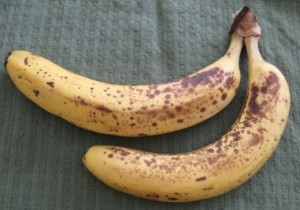
Here is more of the story:
One of the best ways to keep in touch with us is to join our email list. You’ll receive a free copy of Our Top 12 Strategies for Long Term Success on A Raw Plant-Based Diet eBook along with regular information about raw food and plant-based diets and periodic promotions for our classes, events, and other offerings!
Video for My Simple Green Juice Recipe
I have shared this recipe on my blog in the past and now I have a short video explaining how I make this juice:
This juice has been one of my favorites for years because of its simplicity, nutrient content, and versatility. I find it to be a great introductory juice recipe for people new to juicing, since it has a lighter taste than green juice that contains darker leafy greens. I personally love the taste of dark leafy greens, but for some, the taste may need some “getting used to”. I can certainly appreciate this, given that when I became interested in health years ago, I did not even know that dandelion greens were edible. Now, they are one of my favorite leafy greens!
Here is the recipe:
5 stalks of celery (12” long)
1 lemon, peeled
2 medium cucumber, 8” long
This recipe makes about 32 ounces of juice. Here are some of the nutrients found in these ingredients:
| Light Green Juice ingredients | Adult Daily Values | |
| Calories | 165.9 | |
| Calcium | 246.2 | 1000 – 1200 mg |
| Iron | 2.83 | 8 – 18 mg |
| Zinc | 1.67 | 8 – 11 mg |
| Magnesium | 120.2 | 310 – 420 mg |
| Potassium | 1832.9 | 4700 mg |
The mineral content of such simple ingredients is amazing to me, especially calcium and iron. The sodium content of these ingredients is 270 mg, most of which is found in the celery. Cheers!
One of the best ways to keep in touch with us is to join our email list. You’ll receive a free copy of Our Top 12 Strategies for Long Term Success on A Raw Plant-Based Diet eBook along with regular information about raw food and plant-based diets and periodic promotions for our classes, events, and other offerings!
Vitamin E in raw versus roasted almonds
I am often asked by my students about the difference, if any, in nutrient content between raw and cooked foods. I recently found an interesting research article that considered the difference in vitamin E content between raw and roasted almonds. Vitamin E, often referred to as alpha tocopherol, is an antioxidant and an essential nutrient for humans. Antioxidants are well known for their ability to neutralize free radicals before they can cause damage to our cells.
Almonds are known as a rich source of vitamin E:
| Nutrient | Raw Almonds (2 Tbsp., 17.9 g, 0.63 oz.) | Adult Daily Values |
| Calories | 103 | |
| Vitamin E (alpha tocopherol specifically) | 4.69 | 15 mg |
This very recent study noted that subject blood levels of alpha tocopherol were 33% greater after the consumption of raw almonds versus roasted almonds. The researchers of this study speculated that the reason for this was that the alpha tocopherol content of the raw almonds was likely higher than in the roasted almonds. This makes sense, given that antioxidants are broken down in food by cooking in varying amounts depending on the type of food, cooking method, cooking time, and cooking temperature.
Could this outcome also have to do with vitamin E bioavailability differences between the raw and the roasted almonds? This potential was not mentioned in the study, but I think this is entirely possible. One would have to do another study or two to test these individual options. The bottom line here is that roasting did appear to have some type of effect on vitamin E, either directly through its breakdown, by changing its bioavailability, or maybe even through some other means that has yet to be considered.
References:
USDA Nutrient Database
Bornhorst GM, Roman MJ, Rutherfurd SM, Burri BJ, Moughan PJ, Singh RP. Gastric digestion of raw and roasted almonds in vivo. J Food Sci. 2013 Nov;78(11):H1807-13.
Interested in taking your raw food nutrition knowledge to the next level? We cover this topic and so much more in our online Mastering Raw Food Nutrition and Educator Course. For more class details, click here.
One of the best ways to keep in touch with us is to join our email list. You’ll receive a free copy of Our Top 12 Strategies for Long Term Success on A Raw Plant-Based Diet eBook along with regular information about raw food and plant-based diets and periodic promotions for our classes, events, and other offerings!
My Top 5 Favorite Leafy Greens
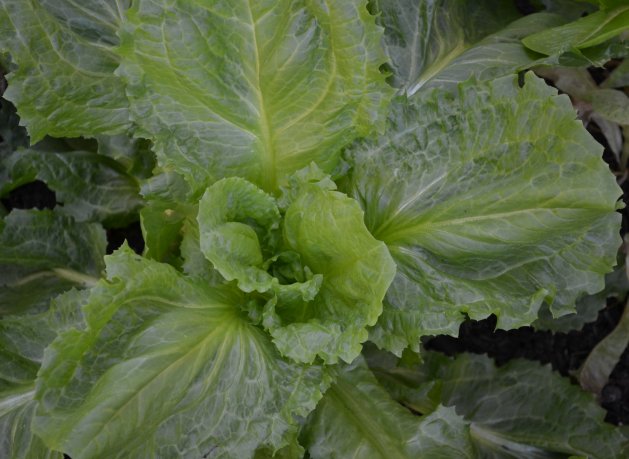
1. Lettuce
From the beginning of my raw food journey in 1990, lettuce has been one of my go-to leafy greens. I love the mild taste and versatility of lettuce, which often forms the basis for my salad recipes. Before my interest in raw food developed, I knew of one type of lettuce: iceberg. This changed quickly as I learned of the many varied types of lettuce including grocery store mainstays such as Romaine, green leaf, red leaf, and Boston. When I started shopping at farmers markets and growing my own food several years ago, I became familiar with lesser known and heirloom varieties of lettuce that expanded my lettuce repertoire further. Right now, Rick and I have 8 varieties of lettuce growing in our backyard garden. Lettuce is a member of the sunflower plant family.
2. Dandelion Greens
Dandelion greens are popularly consumed as an early spring green, but I personally love dandelion greens year round, and enjoy them in my salads, smoothies, and juices. The mineral content of dandelion greens is notable and rivals kale in calcium content. Dandelion greens are in the sunflower plant family (Asteraceae), along with lettuce, endive, escarole, frisée greens, sunflower seeds, and Jerusalem artichokes.
3. Tree Collard Greens
Rick and I planted several collard plants in our garden when moved into our house a few years ago, and they are still going strong and producing beautiful large deep green leaves, year round in northern California. What we love about our tree collards is that they are relatively low maintenance and are a reliable source of greens for us. We enjoy greens from our tree collard plants mostly in smoothies, but occasionally put them in juice or a salad. These tree collard greens are tender and easily digestible for us in comparison to collard greens we find in the grocery store that generally have a tougher consistency. Our tree collards are now about 12 feet tall and still growing, with numerous leaves that can measure up to 8 inches in diameter or more. Collard greens, like other members of the cabbage family (Brassicaceae) contain noteworthy amounts of certain minerals.
4. Kale
Kale is most certainly one of our many favorite leafy greens and a backyard garden staple. I first became interested in kale when I discovered its impressive calcium and iron content, which is not surprising, given that kale is a member of the cabbage family. Members of the cabbage plant family are also called “cruciferous”, in reference to the cross-like appearance of their flowers, or “brassica” vegetables, reflecting their plant family name Brassicaceae. Rick and I enjoy kale in smoothies, juices, soups, and many other recipes. Since we like to have a variety of foods in our diet, we rotate our leafy greens to enjoy the diversity of flavors, textures, and nutrients offered by different leafy greens. For example, we might have kale as our main leafy green on one day, dandelion greens the next, frisée greens the next, and so forth.
5. Escarole
Rick and I recently returned home from traveling, visiting, and teaching on the east coast to find that the tiny escarole starts we planted in September had grown into huge plants, with 9-inch diameter leaves, at the largest. Given the size of the leaves, this escarole would make great wraps. We have found that escarole grows well in cooler weather, so the size of our plants is not a surprise, given that it is mid-November.
Escarole is in the sunflower plant family, so its strong resemblance to some lettuce varieties is justified. I have found that the taste of escarole can vary, for example, the escarole growing in our yard has a more mild taste than the more bitter versions I have found in grocery stores and farmers markets.
Here are some of the nutrient highlights of escarole:
| 3 cups chopped escarole (150 g) | Adult Daily Values | |
| Calories | 25.5 | |
| Calcium | 78 mg | 1000 – 1200 mg |
| Iron | 1.24 mg | 8 – 18 mg |
| Zinc | 1.18 mg | 8 – 11 mg |
One of the best ways to keep in touch with us is to join our email list. You’ll receive a free copy of Our Top 12 Strategies for Long Term Success on A Raw Plant-Based Diet eBook along with regular information about raw food and plant-based diets and periodic promotions for our classes, events, and other offerings!
In Defense of Research
I recently read an online article in which the author criticized nutrition-related “science” and “research.” His criticism focused on the notion that research quickly becomes outdated as more current research takes its place, so what is the point in paying attention to it at all? I understand this questioning, but must suggest that the answer is not as simple as the author would imply.
First of all, let’s explore the term “research”. The most common use of this term is to describe use of the scientific method to test a hypothesis in a controlled setting. In more relatable language, research is done to gather evidence that either supports or opposes a point of view, or adds to our knowledge of a subject. Let’s say that a researcher wants to assess the vitamin C content of oranges. In order to do this, the researcher would obtain a sample of oranges and use the appropriate technology to measure the vitamin C content, among other things. The amount of vitamin C found in this particular orange sample is new information, since it was just tested. Does this new information necessarily invalidate previous research done on the vitamin C content of oranges?
In my opinion, no.
I view this new information as additional knowledge to add to our growing understanding of the vitamin C content of oranges. I do not always see older information as being irrelevant, instead I recognize the importance of evaluating evidence on a case-by-case basis. For example, let’s say that a researcher wants to see if there is a change in the vitamin C content in oranges over a 50 year period. In this study, some of the data collected on the vitamin C content of oranges is decades old. Most people might think of this information as being outdated, but in the context of this comparison study, it is entirely relevant.
The bottom line is that we cannot lump all research into one category. In my opinion, if one believes that research is not worthy of consideration because it eventually becomes outdated, they are missing out on lots of great information as it becomes available. There is much that we know and much that we have yet to know. To discount research as incomplete is missing the very point of research, which is to discover new information.
Here is a real world example: should we not utilize the technology of today because it will be outdated tomorrow? Nothing will ever be 100% complete or perfect. If our knowledge on a topic is 80% complete, should we discount that 80% just because we don’t know everything yet? We recently watched the new Star Trek movie in 3D in a nearby theater, and enjoyed it very much – so much that we would like to see it again. Should we not purchase the blu-ray to watch it again at home because we don’t have 3D and our sound system is not as good and screen not as large as we experienced in the movie theater? Should I not use a computer because it will eventually become outdated?
I personally love to watch the evolution of information through all types of research, be it peer-reviewed studies, clinical outcomes, or personal experience. There is always more to explore in the health and nutrition field, and to discount any information is a missed opportunity to learn what may be the key to unlocking one’s health potential. I see research as an adventure of discovery and am happy to have the opportunity to watch the progression of knowledge in this exciting and ever-changing field!
One of the best ways to keep in touch with us is to join our email list. You’ll receive a free copy of Our Top 12 Strategies for Long Term Success on A Raw Plant-Based Diet eBook along with regular information about raw food and plant-based diets and periodic promotions for our classes, events, and other offerings!
Video series on juicing by Dr. Rick Dina, D.C.
In this video, Rick explains his experience with juicing:
Here is one of Rick's favorite green juice recipes:
Here is another of Rick's favorite juice recipes:
One of the best ways to keep in touch with us is to join our email list. You’ll receive a free copy of Our Top 12 Strategies for Long Term Success on A Raw Plant-Based Diet eBook along with regular information about raw food and plant-based diets and periodic promotions for our classes, events, and other offerings!
What I learned about vitamin B12 from the Framingham Offspring Study
![400px-Cobalamin.svg[1]](https://rawfoodeducation.com/wp-content/uploads/2013/07/400px-Cobalamin.svg1_.png) I first came across the Framingham Offspring Study several years ago when I was doing some research on the vitamin B12 status of people of various dietary persuasions. I found the results of this study to be fascinating, and apparently I am not the only one who feels this way, given that I have seen this study mentioned in numerous YouTube videos, in various health blogs, and in class by many of my students. Why is this study in particular so popular?
I first came across the Framingham Offspring Study several years ago when I was doing some research on the vitamin B12 status of people of various dietary persuasions. I found the results of this study to be fascinating, and apparently I am not the only one who feels this way, given that I have seen this study mentioned in numerous YouTube videos, in various health blogs, and in class by many of my students. Why is this study in particular so popular?
The answer likely involves many reasons. Here a couple of my thoughts:
- This study talks about the vitamin B12 status of the study participants. There is little doubt that vitamin B12 is a hot topic in the health community and most people I have spoken with over the years have expressed interest in learning about B12. In fact, it is one of the more popular questions that Rick and I are asked.
- The study participants were omnivores. People who eat a plant-based diet or vegan diet are told to be aware of their B12 status, but what about omnivores? Do they need to be aware of this too?
The Framingham Offspring Study (FOS) helps answer this question. The study examined the B12 status of 2,999 omnivores of ages ranging from 26 – 83, along with supplemental and food sources of B12, such as fortified cereal, dairy products, and various types of meat. Here is a brief summary of the data from this study:
- 39% of study participants were found to have blood levels of vitamin B12 in the “low normal” to deficient range (<258 pmol/L or 350 pg/ml) and the youngest members of the group (26 – 49 years) had similar B12 status to the 65 years and older group.
- Study participants who consumed supplements and/or cereal fortified with B12 had the highest blood levels of B12, followed by dairy products, and then meat.
- Study participants who got most or all of their B12 from meat sources, had the lowest blood B12 levels.
- The researchers commented that vitamin B12 supplements and fortified foods are likely to be more reliable sources of B12 than non-fortified foods, and that the use of supplements in particular was found to be protective against low vitamin B12 levels in this and previous studies.
- Because of these outcomes, the researchers suggest that the potential for B12 deficiency in the general adult population be examined.
I was not completely surprised to see that this study calls to question the reliability of meat as an adequate source of B12, as we have consulted with several people in the past few years that have been low in B12 despite eating an omnivorous diet. Hmmm…..
I would encourage you to read this study, and see for yourself what the data indicates. I have provided here a brief summary of what I learned from this study, but the actual full-text article gives much more specific information on the observations of the researchers.
Granted, this is only one study and some case histories, but nonetheless I personally feel that it is important for everyone to consider their B12 status regardless of whether or not they are a vegan, vegetarian, omnivore, etc. As this study indicates, there are many factors to consider in this B12 puzzle. Here is a link to the full text article of the Framingham Offspring Study.
Reference:
Tucker KL, Rich S, Rosenberg I, Jacques P, Dallal G, Wilson PW, Selhub J. Plasma vitamin B-12 concentrations relate to intake source in the Framingham Offspring study. Am J Clin Nutr. 2000 Feb;71(2):514-22.
Interested in taking your vitamin B12 and nutrition knowledge to the next level? We cover this topic and so much more in our online Mastering Raw Food Nutrition and Educator Course. For more class details, click here.
One of the best ways to keep in touch with us is to join our email list. You’ll receive a free copy of Our Top 12 Strategies for Long Term Success on A Raw Plant-Based Diet eBook along with regular information about raw food and plant-based diets and periodic promotions for our classes, events, and other offerings!
The role of critical thinking in making health decisions
 TMI, information overload, what on earth do I do with all of these little bits and pieces of health information, these “sound bites”? How do all of these pieces of information fit together into the puzzle of health, and is this information even accurate or relevant? Over the past 23+ years since I entered the health field, these questions have crossed my mind either consciously or unconsciously, and have even been something of a mountain at various times in my life. There is so much information “out there” on health and dietary choices that it can range from dazzling to overwhelming.
TMI, information overload, what on earth do I do with all of these little bits and pieces of health information, these “sound bites”? How do all of these pieces of information fit together into the puzzle of health, and is this information even accurate or relevant? Over the past 23+ years since I entered the health field, these questions have crossed my mind either consciously or unconsciously, and have even been something of a mountain at various times in my life. There is so much information “out there” on health and dietary choices that it can range from dazzling to overwhelming.
Many students I have spoken with over the years have said that one of the most important reasons they have attended the series of classes my husband and I teach is to make sense of all of this health information that they hear. One of the goals we have in teaching our classes is to provide a framework within which students can understand these individual pieces of information and how they fit into the larger picture of health. One of the ways we establish this health framework is though the encouragement of critical thinking.
Before we can proceed, we must consider the question “what is critical thinking?” I have read numerous definitions and points of view on critical thinking, some simple to understand and others more complex. Overall, most of the definitions of critical thinking involve the gathering of as much information as possible, including information in opposition to one’s current point of view, and then making a decision based on this information while still remaining open to possible alternatives, and considering that one has inherent personal biases that can influence the decision made.
In my very young years, I remember learning through memorization of information which I promptly forgot after the test was over, but more importantly, I believed that the information given to me was always accurate. Why wouldn’t it be? Later, I started considering other points of view as having validity and understanding the importance of thinking for myself. At this time, I found it somewhat challenging to make this change, given that I had become so accustomed to just accepting the information handed to me previously. Accepting is easy, thinking requires more effort. After a short period of time, I naturally started thinking for myself and the evaluation of information coming my way became second-nature. I eventually learned that this thought process I had adopted actually had a name: critical thinking.
The reason why I am sharing this story with you is because it is very much related to how some view health information.
To clarify, here is a relevant example:
There are lots of products being sold in the name of health and the people selling those products can be quite convincing. Is all of the information imparted about these products accurate? Or is the person saying whatever is necessary to make a sale?
In my pre critical thinking days, I would have likely accepted this information. Since my introduction to critical thinking, if I am interested in a product, I first gather information on the product, which includes:
- Reliable information supporting the popular view of the product
- Reliable information supporting the opposite view of the product
- Reliable information that supports other views of the product
- Reliable information that contradicts any of the points of view noted above.
Bottom line, I gather as much information as possible about the subject in question from multiple points of view, and very importantly I also consider what information is supported by human physiology and biochemistry. As I collect more information and make sense of it in a larger context, the least relevant, least compelling, and least accurate information is naturally supplanted by the most relevant, accurate, and compelling information. In a sense, the most accurate information becomes even more apparent, when compared to that which is less accurate or inaccurate.
It is important to consider that information on how the body works is constantly evolving and is and will always be incomplete, so for this reason and others, I remain open minded to changing my decision in the future, when and if compelling new information becomes available. I know this is a lot to consider, but this critical thinking and decision making process has become second nature to me. I liken this experience to learning how to ride a bicycle. It can be a little challenging at first, but soon becomes easy.
The bottom line here is that critical thinking can be very useful in helping evaluate information that comes one’s way. Many times I have heard students say that they feel that they were convinced to buy a product that they ended up wanting to return. Often times, being aware of ways in which one can evaluate information about such products can help people be more objective about their purchases before they hit the “buy” button. Of course, critical thinking can be useful in evaluating all health information, not just product purchases. I must clarify that Rick and I are not opposed to the use of health products, given that we find many to be useful. Both of us find it very useful to approach our buying choices with critical thinking.
The reason why I mention critical thinking in this article, is that in the coming weeks and months I plan to start talking about various studies and research on health and plant-based diet related topics, and will be considering critical thinking in the evaluation of this information. So this article is, in a sense, laying the groundwork for things to come. After all, a building is only as strong as its foundation, and the same is true for health information.
I know that many of you are familiar with this topic, so if you are, great! For those of you that have not considered this information previously, critical thinking can be an empowering tool in helping one with making decisions!
One of the best ways to keep in touch with us is to join our email list. You’ll receive a free copy of Our Top 12 Strategies for Long Term Success on A Raw Plant-Based Diet eBook along with regular information about raw food and plant-based diets and periodic promotions for our classes, events, and other offerings!


